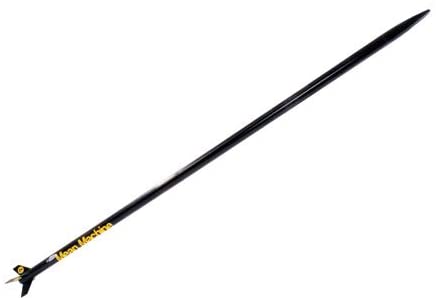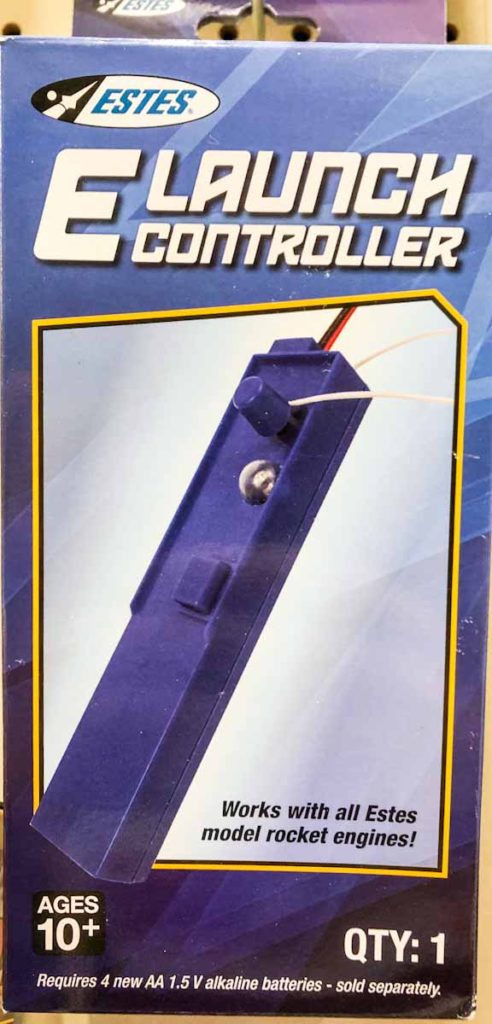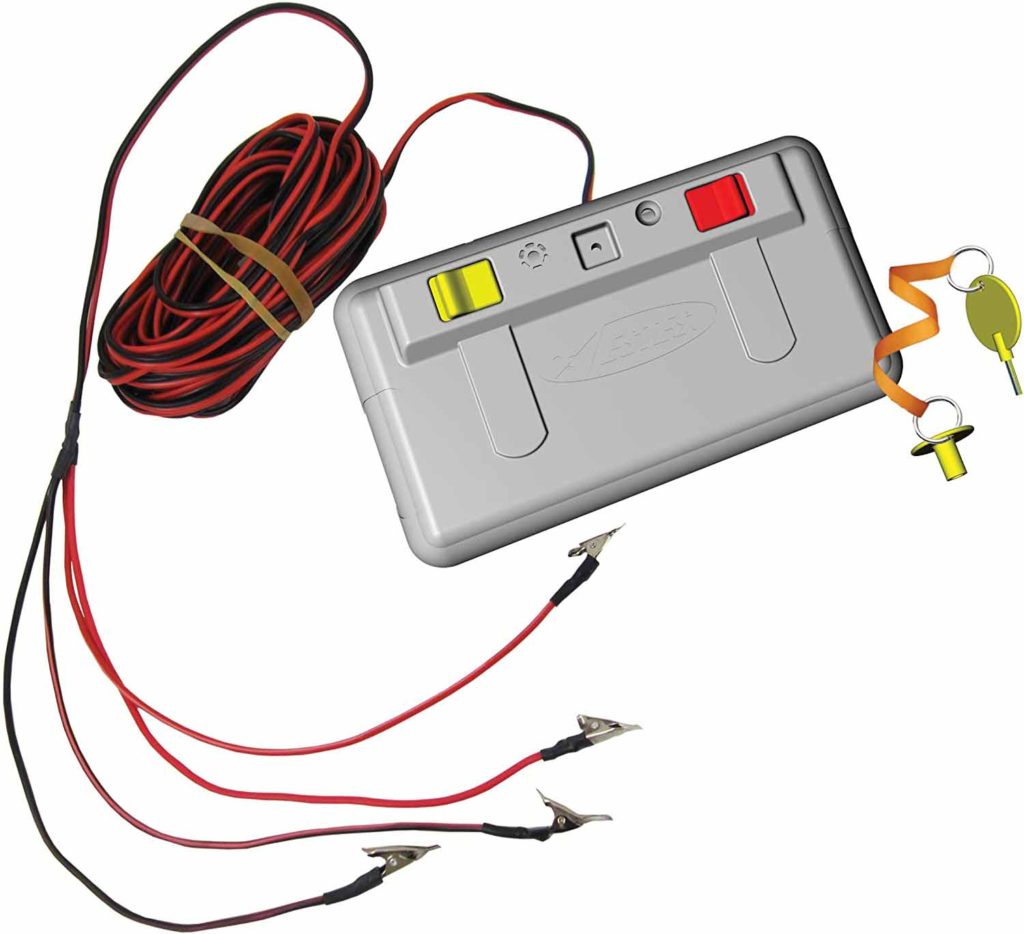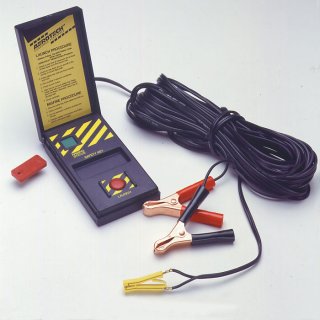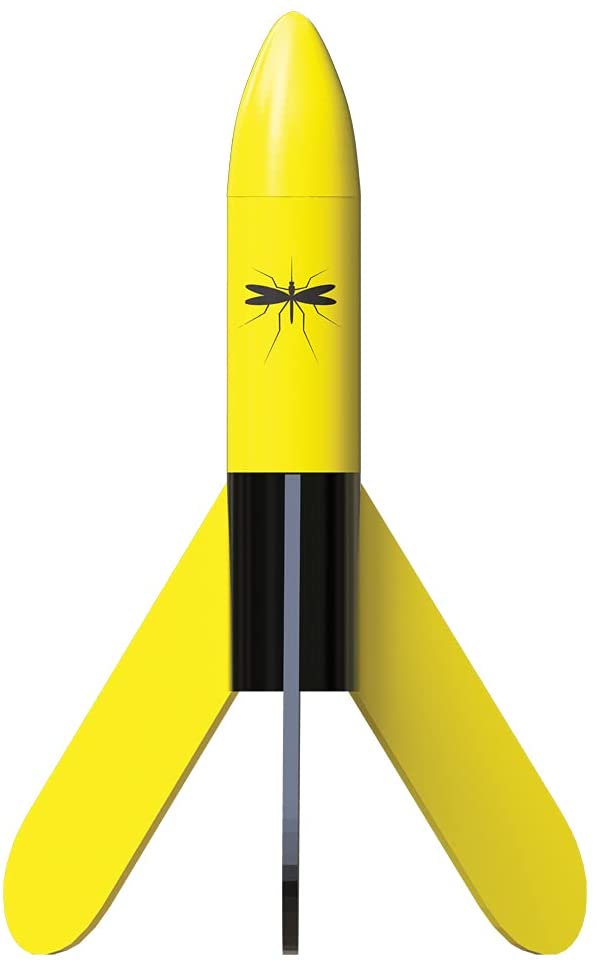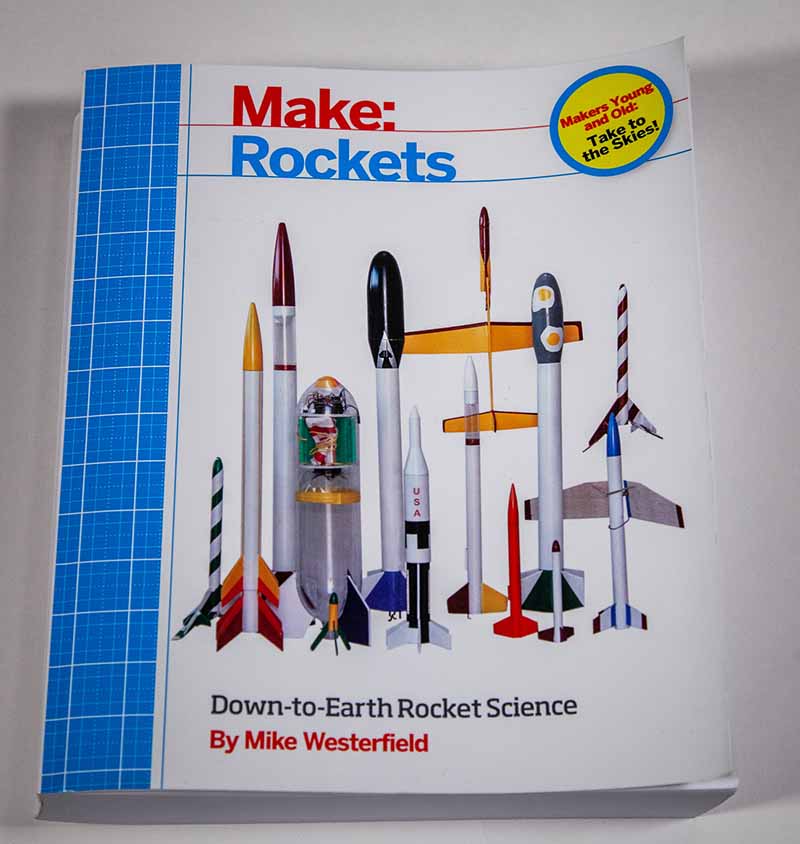
We may receive commissions from purchases made through links in this post, at no additional cost to you.
The other week I was building a rocket with my kids and my boys started talking about how they wanted to make a BIG rocket (you know the way kids dream out loud). And it got me thinking, what’s the biggest model rocket I can fly?
Obviously, you can get pretty big when it comes to rocketry (NASA’s Saturn V rocket was the tallest, heaviest, and most powerful rocket standing at 363 feet), and since I’m not certified to do anything with a high-power rocket engine (pretty much anything over a G engine), I decided to limit myself to what I can buy today.
And while I’m at it, what’s the smallest rocket I can fly? I mean, if I’m going on a deep dive, I might as well explore both extremes.
The tallest commercial low-powered rocket available today (one that would not require a high-power certification or FAA clearance), is the Estes Mean Machine standing at 80 inches (that’s 6 feet, 8 inches) tall. The smallest commercial rocket available is the Estes Mini Mosquito standing at 3.8 inches tall.
Big Model Rockets
When you start dreaming about launching bigger rockets, there is a much higher ceiling of what you can build and launch. If you’re a Dude Perfect guy and watched their Rocket Battles, you’ll see there is a big difference in rocket sizes between the first and second rocket battles.
Big Rockets and Mid to High Powered Engines
If you want to get into building and launching big rockets, you’re going to want to explore getting into mid-power and high-power rocketry. The FAA defines a high-powered rocket if it:
- Uses a motor with more than 160 Newton-seconds of total impulse (an “H” motor or larger) or multiple motors that all together exceed 320 Newton-seconds; or
- Uses a motor with more than 80 Newtons average thrust (see rocket motor coding); or
- Exceeds 125 grams (4.4 ounces) of propellant; or
- Weighs more than 1,500 grams (53 ounces) including motor(s); or
- Uses a hybrid motor or a motor designed to emit sparks; or
- Includes any airframe parts of ductile metal.
This information is available on the National Association of Rocketry’s website at www.nar.org.
This means that to buy any motor that is a class H or higher, that you would need to get a high-power rocket certification (https://www.nar.org/high-power-rocketry-certifications/).
You can still buy and use engines and rockets that are classified as mid-power (you don’t need certification to buy a mid-power engine, but you need to be at least 18), but this is where things get a little complicated. As the rocket thrust gets higher, we start to move out of using black powder as propellant and into composite engines.
For more information on engines, check out Model Rocket Engines: Choosing the Right One for Your Rocket.
Composite motors come in lots of shapes and sizes, some reusable, some single use. I’m not going to get too into it into this article, but know that composite motors use different igniters which need different launch controllers. Combined with a bigger launch pad, the total investment into mid-power rockets picks up quickly. Not to mention you then need to find a field big enough to launch them in.
Because I’m looking into activities that you can do with your kids this weekend, I’m going to stick with low-powered rockets. You can buy most of this at a hobby or craft store (I have a really great selection of rocket stuff at my local Hobby Lobby) and on Amazon. It’s not super expensive to get into and you don’t need to find a special field to launch your rockets.
This article is originally from www.dadstuffsite.com
Estes Mean Machine
The tallest commercial, low-powered rocket is the Estes Mean Machine, and it stands at 80 inches tall. That’s over 6 ½ feet!
Although Estes classifies the Mean Machine as an advanced build, anyone who has built a rocket as a kid (before they started using fancy plastic fins) will learn quickly that this is no more difficult than the old Estes rockets. This rocket needs some assembly, and you need to deal with gluing on balsa fins (you may consider getting the fin alignment guide to simplify), but beyond that, it’s not that difficult to put together.
The good news about the Mean Machine is that with its incredible size, you can still fly it with the standard Estes launch pad. So if you bought one of those Estes rocket kits that came with the launch set, then you can fly the Mean Machine using that launch pad.
Learn more about picking the Best Beginner Model Rockets to Build and Launch with Your Kids.
Launch Controller
The launch controller is a different story. You may need to upgrade your launch controller to the Estes E Launch Controller (or some other launch controller that is designed for class E engines). The other Estes launch controller (the red Electron Beam controller that usually comes in launch sets) is not recommended for use with class E engines. And if you’re anything like me, you want to know why the perfectly good launch controller you already have isn’t good enough.
The main difference between the Estes Electron Beam and E Launch Controllers is the length of wire between the controller and engine. Both launch controllers use the same power (4 AA alkaline batteries), but the E Launch Controller has 30 feet of wire compared to the Electron Beam’s 15 feet. The E Launch Controller also has thicker gauge wires to deliver that power over the longer length.
When flying rockets with class D motors and smaller, Estes recommends you stand at least 15 feet from the rocket. A class E motor is more powerful so it’s recommended you stand at least 30 feet from the rocket. The main difference in upgrading your launch controller is therefore to maintain a minimum safe distance when launching your rocket.
Related: How High Did My Rocket Fly? (3 Ways to Measure Altitude)
If you decide to buy a new launch controller, then upgrade to one that is at least 30 feet long. And if you think you might want to start getting into mid- to high-power rockets, then consider upgrading to something that can handle composite motors or cluster motor set ups. Estes makes a Pro Series II Launch Controller that uses 6 C-cell batteries or a rechargeable 3 cell LiPo. Aerotech makes the Interlock Launch Controller which is 40 feet and connects to a car battery. This thing will work on pretty much any igniter.
This article is originally from www.dadstuffsite.com
If you’re handy and like to tinker (or just plain cheap like I am), you can take the red Estes Electron Beam Launch Controller and put on 30 feet of lamp cord wire from Home Depot or Lowes (make sure you get stranded wire, not solid core wire). Now you effectively have the Estes E Launch Controller and have paid a quarter of the price. Win.
Tiny Model Rockets
If you want to go to the other end of the spectrum and figure out what is the smallest rocket you can fly, then we need first figure out what is the smallest rocket engine we can use. If you’re up for a small at-home DIY project, you can make really tiny rockets using foil and a matchstick as your engine.
But if we’re talking commercial rockets, the smallest size engines available are the Estes 13mm mini engines, and the smallest rocket on the market is the Estes Mini Mosquito.
This article is originally from www.dadstuffsite.com
The Mini Mosquito stands just under 4 inches tall. This rocket is so small and lightweight that it doesn’t even come with a recovery system. When the ejection charge goes off, instead of pushing out a parachute or streamer, it pushes the spent engine out (so make sure you don’t use an engine that ends in 0 in the engine code. Learn why here.). The two then come gently tumbling to the ground.
Don’t be fooled by the size though, this guy can really fly! Because it is so little, there is already very little drag compared to bigger rockets. And if you want to be a little extra and reduce drag even more and put on an A10-3T engine, you can easily make this little guy fly over 1000 feet!
Related: Make My Rocket Fly Higher (Engine Selection and Finishing)
I highly recommend you paint your Mini Mosquito in a bright color. It takes off fast and is easy to lose sight of it. In fact, even without a parachute to push it off course on the descent, there is still a very good chance you’re going to lose this rocket (it’s still worth it though)!
Diving Deeper into Model Rocketry
If you find yourself getting seriously into rocketry and you want to learn more, check out Make: Rockets by Mike Westerfield. Make is an awesome resource for so many things STEM-related and this book will give you everything you need to know about low-powered rocketry including compressed air and water rockets.
This book is no-joke and is about 1½ inches thick. This book has become my rocket bible and is a great resource (and no, Make did not ask me to say any of this).
Recent Posts
Last week my son asked me how high a rocket can fly. As I went on my deep dive and explored just how high low-powered rockets can go, I started to ask myself another question. How can I make my own...
How High Can a Model Rocket Fly (Plus 3 High Flying Rockets)
I’m sitting at the kitchen table building rockets with my two little boys, and my oldest asks how high his rocket is going to go (and more importantly, will it go higher than his little...

